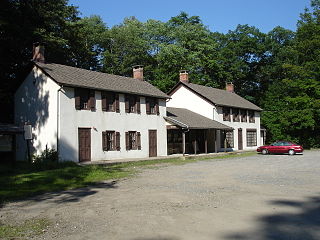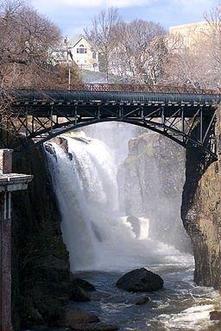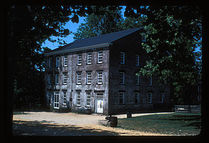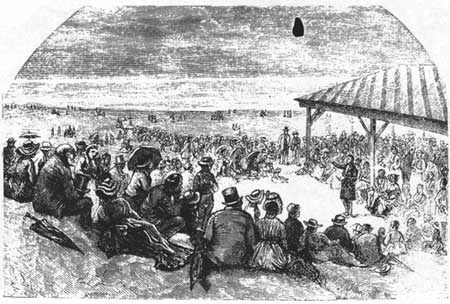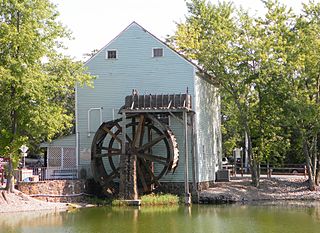-- Historic Villages and
|
|
-- Restaurants
-- Hotels -- Theaters -- Stadiums/Arenas/Teams -- Historic Villages -- Historic Homes -- Battlefields/Military -- Lighthouses -- Art Museums -- History Museums -- Zoos/Aquariums ** Home
* History * Population * Government * Government Services * Politics * Lobbyists * Taxes * State Symbols * Biographies * Economy * Employers * Growth Companies * Venture Capital * Law Firms * Labor Unions * Jobs * Real Estate * Transportation * Education * State Colleges * Associations * Charities * Recreation * Restaurants * Hotels * Health * Hospital Ratings * Environment * Stadiums/Teams * Theaters * Historic Villages * Historic homes * Battlefields/Military * Lighthouses * Art Museums * History Museums * Wildlife * Climate * Day Trips * Zoos/Aquariums * Beaches New! * National Parks New! * State Parks New! * Amusement Parks New! * Waterparks New! * Swimming holes New! * Arboretums New! More... * Gallery of images and videos * Fast Facts on key topics * Timeline of dates and events * Anthology of quotes, comments and jokes * E-books digital publications * Book Store of NJ books * Links to other resources * NJ Presidential Quiz * Opinion |
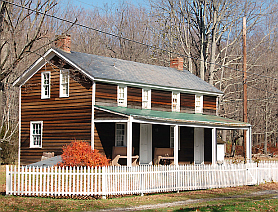 Hotel which housed workers and travelers in Millbrook Village. Image: State of New Jersey Hotel which housed workers and travelers in Millbrook Village. Image: State of New Jersey
Located in northwest corner of state in Sussex County, origins date to 1832 construction of grist mill by local farmer Abram Gris along the newly-completed Columbia-Walpack Turnpike where it crossed stream known as "Van Campens Mill Brook." By 1875, village reached peak of 75 inhabitants and about 19 major buildings. From 1880 onward, population declined along with other rural villages. Garis mill closed around 1900, and by 1950, blacksmith only remaining business in town. In 1960's and 1970s, National Park Service, in preparation for potential construction of Tocks Island Dam on Delaware, relocated some buildings to higher ground at Millbrook, with some replacing original buildings that had been demolished. Village today has about same number of buildings as in 1900. On summer weekends, several buildings including museum, hotel, grist mill and church open to public, volunteers from Millbrook Village Society demonstrate crafts of era, including woodworking, weaving, basket-making.
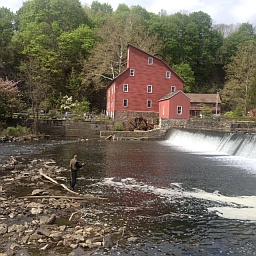 Red Mill in Clinton. Image: NewJerseyAlmanac.com Red Mill in Clinton. Image: NewJerseyAlmanac.com
Area first settled in 1750s with commerce centered around construction of grist mills on South Branch of Raritan River, later served as stop on cross-New Jersey route from Elizabethtown to Delaware River. Other businesses included limestone quarries, tannery and surrounding farms. Town of Clinton incorporated 1865, branch line of Lehigh Valley Railroad completed 1881 into town. Clinton House Hotel across the road. Town devastated by fire in 1891, rebuilt 1890s-1920s with Victorian shops and homes largely remaining today, Red Mill, on west bank of Raritan, now privately-owned Historical Museum and Dunham's stone mill on east bank now Hunterdon Art Center. Clinton House restaurant dates from tavern and stage coach stop opened 1830. Center of town added to National Register of Historic Places in 1995.
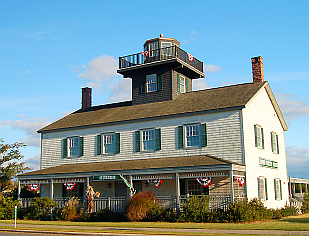 Tucker's Island Lighthouse. Image: State of New Jersey Tucker's Island Lighthouse. Image: State of New Jersey
40-acre site on Tuckerton Creek re-creation of marine village with 17 historic and re-created buildings connected by boardwalk and wetlands nature trail features two houseboats, duck decoy workshops and gallery, working boatworks building, historic marine railway, decoy carving workshops and recreated Tucker’s Island Lighthouse. Formerly known as Barnegat Bay Decoy and Baymen’s Museum, also home to Jersey Shore Folklife Center which researches and preserves traditions of Jersey Shore and Pinelands. Volunteers demonstrate work of decoy carvers, boat builders, basket makers, quilters, commercial fishermen, artists and other baymen and women. Programs include workshops, tours and classes taught by Jersey Shore artists. Tucker’s Island Lighthouse exhibits on privateers and pirates of Jersey Coast, founding of US Life Saving Service and local shipwrecks. Jacques Cousteau National Estuarine Research Reserve Interpretive Center housed in Tuckerton Yacht Club at seaport, managed by Institute of Marine and Coastal Sciences of Rutgers, conducts scientific research and hosts education and interpretive programs. Operated by nonprofit Tuckerton Seaport, Inc.
Historic Village in eastern Pinelands originally a cranberry farm and packing plant established in mid-19th century by Double Trouble Company formed to sell timber, millwork products, and cranberries. Became one of state's largest cranberry producers. Village consists of 200 acres of cranberry bogs, cedar forest and fourteen restored historic structures dating from late 19th through early 20th century including sawmill, cranberry sorting and packing house, general store, cook house, schoolhouse and worker houses. Purchased by state of New Jersey in 1964, placed on state Register of Historic Places in 1977 and on National Register in 1978. Guided village tours, including exhibits inside restored sawmill and cranberry packing house, may be arranged through interpretive center.
Pinelands farm community which began with wild cranberry bogs converted to commercial production by James Fenwick in 1850s. After Fenwick's death in 1882, his son-in-law Joseph J. White expanded bogs and incorporated business as J.J. White Inc. in 1912, largest cranberry farm in New Jersey. By 1920s, farm also comprised field of experimental blueberry bushes and greenhouses, and main village including worker housing, general store, barrel-making factory and warehouse, cranberry sorting and packing plant, and other associated outbuildings and structures. Elizabeth White, White's daughter, along with William Colville, developed commercial blueberry by cross-fertilizing wild bushes to create new varieties with higher yields and disease resistance. Property owned by state government, administered by Division of Parks and Forestry as part of Brendan T. Byrne State Forest and leased to nonprofit Whitesbog Preservation Trust, which seeks to restore and enhance land, historic sites and buildings and sponsors events and educational programs. Village includes some restored buildings, as well as several in ruins, extensive biking and walking trails. |
